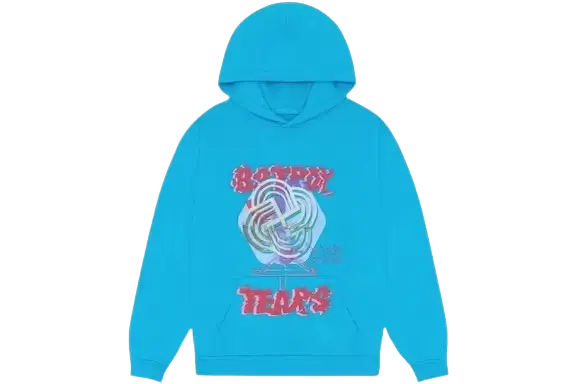Fashion has always been an essential medium for self-expression and cultural storytelling. Among the many brands striving to leave a mark, Denim Tears stands out as more than just a label – it’s a conversation, a cultural movement, and a significant contributor to the ongoing dialogue about race, identity, and history. Launched by creative polymath Tremaine Emory, Denim Tears delves deep into the African American experience, creating pieces that carry historical resonance while embodying a modern, streetwear aesthetic. In this article, we explore Denim Tears’ significance, its impact on fashion and culture, and how it redefines storytelling through clothing.
Origins: The Vision Behind Denim Tears
Tremaine Emory, a cultural curator, artist, and creative director, launched Denim Tears in 2019 as a means to explore themes of race, identity, and the African American experience. With a rich background in fashion and close ties to influential figures such as Kanye West and Virgil Abloh, Emory had already established himself as a key player in the fashion world. However, Denim Tears represented something deeply personal to him.
Emory’s vision was not to create a typical fashion line but to use clothing as a canvas for telling stories often overlooked by mainstream society. Denim Tears emerged as an homage to the struggles and triumphs of African Americans, using fashion as a form of activism. This isn’t just about putting together stylish outfits—it’s about making a statement, educating consumers, and honoring history.
Symbolism and the Cotton Wreath Motif
One of the most iconic elements of Denim Tears is the recurring cotton wreath motif, which has become synonymous with the brand. The wreath of cotton is a powerful, multi-layered symbol representing both the painful legacy of slavery and the resilience of African Americans. The choice of cotton specifically calls back to the historical trauma of the transatlantic slave trade and the cotton plantations in the American South, where generations of Black people were forced into labor. Yet, by incorporating this imagery into streetwear, Emory transforms it into a symbol of reclamation and resistance.
The cotton wreath appears on everything from denim jackets to jeans, each piece imprinted with this symbol as a reminder of history. It’s a deliberate choice to ensure that those who wear the brand are aware of the significance behind the designs. In this way, Denim Tears Hoodie goes beyond aesthetics, adding layers of meaning to each garment.
Collaborations and Cultural Impact
Denim Tears is not a solitary endeavor. One of the hallmarks of the brand is its collaboration with other fashion labels and artists, which amplifies its reach and influence. A notable collaboration occurred with Levi’s, where Emory worked on a capsule collection that fused his signature cotton wreath imagery with the classic Levi’s silhouette. This collaboration represented the intersection of American heritage through Levi’s denim and the painful history of slavery, both of which are deeply tied to the fabric of the United States.
Denim Tears has also collaborated with iconic brands like Converse, delivering footwear designs that continue to echo the brand’s historical narrative. For example, the Denim Tears x Converse Chuck 70s showcased the cotton wreath motif, seamlessly blending sneaker culture with historical discourse.
These collaborations extend the brand’s message beyond a niche audience and into the mainstream, allowing a wider audience to engage with the African American experience and history. Emory’s partnerships with major brands are not just about commercial success—they’re about weaving a historically significant narrative into the very fabric of global fashion.
Storytelling Through Clothing
Denim Tears does not rely on traditional marketing tactics. Instead, the brand’s storytelling is rooted in its designs and the way they evoke historical and cultural memories. Each collection has a specific message, and Emory often uses his platform to provide context, ensuring that the significance of the pieces is clear.
For instance, one of Denim Tears’ most striking collections featured graphics of slave ships and prints that referenced the transatlantic slave trade. The pieces were designed to provoke thought and reflection, forcing wearers and observers to confront uncomfortable truths about the origins of modern Western society and the continued impact of slavery.
Moreover, Emory doesn’t limit his storytelling to clothing. He extends his creative vision through photography, film, and other mediums, crafting a multi-sensory experience that connects the wearer with the deeper themes of African American history and culture. Through visual campaigns, Emory invites the audience into a space where fashion, art, and activism merge seamlessly.
Beyond Clothing: Fashion as Activism
What sets Denim Tears apart from many other fashion brands is its unapologetic embrace of activism. Tremaine Emory has made it clear that Denim Tears is not just about selling products—it’s about sparking conversation, encouraging reflection, and driving change. Emory’s work is steeped in the Black Lives Matter movement, and the brand consistently champions social justice causes.
In interviews, Emory has spoken about how clothing can act as a vessel for education. He aims to create garments that make people stop and think—whether it’s about the role of African Americans in building the wealth of the United States or the ongoing fight against systemic racism. By doing so, Denim Tears Jacket shifts the role of fashion from being purely aesthetic to becoming a medium of cultural and political expression.
In the wake of George Floyd’s murder in 2020 and the ensuing protests, Denim Tears continued to use its platform to address issues of racial inequality and police violence. The brand became a vehicle not just for sartorial expression but for public advocacy, reminding consumers that what they wear can carry significant meaning and message.
Reception and Future Impact
Denim Tears has been lauded for its ingenuity, not just within the fashion world but also in cultural and political circles. Critics and consumers alike have recognized the brand for its unique ability to merge style with substance. Publications like Vogue, GQ, and The New York Times have praised the brand for its bold storytelling and for challenging the traditional boundaries of what fashion can achieve.
Looking to the future, Denim Tears is poised to continue growing as a brand that not only redefines streetwear but also redefines how fashion can engage with history. Emory’s influence is already being felt, as other brands look to incorporate more meaningful and culturally significant storytelling into their designs.
Furthermore, Emory’s appointment as creative director at Supreme in 2022 signals that his vision and approach to fashion will only continue to expand. Denim Tears is not just a moment in fashion—it is part of a larger movement toward more thoughtful, purpose-driven design.
Conclusion
Denim Tears Clothing is far more than a brand; it’s a cultural and political statement wrapped in the form of streetwear. Tremaine Emory’s ability to channel the complex history of African Americans into wearable art has made Denim Tears one of the most compelling brands in contemporary fashion. Through its symbolism, collaborations, and activism, Denim Tears Tracksuit offers a unique blend of style and substance that challenges consumers to think critically about the world around them.
As the brand continues to grow and evolve, it will undoubtedly leave a lasting impact on both the fashion industry and the broader cultural landscape. Denim Tears is a reminder that clothing can be more than just fabric—it can be a powerful tool for education, activism, and change.

